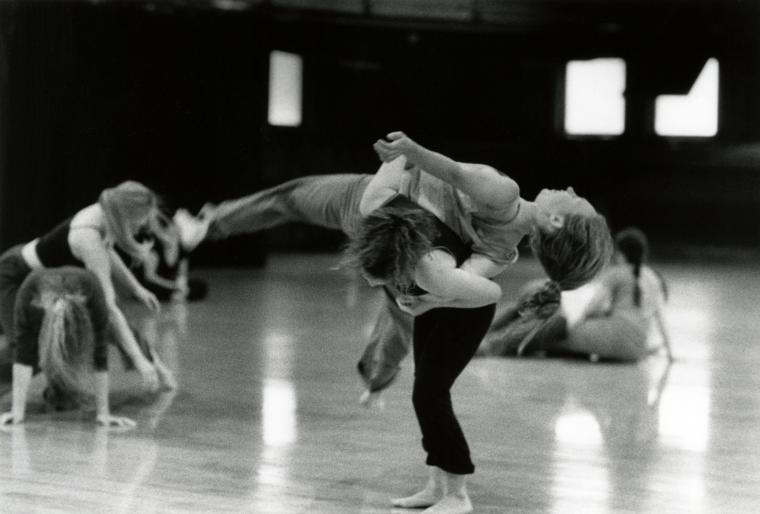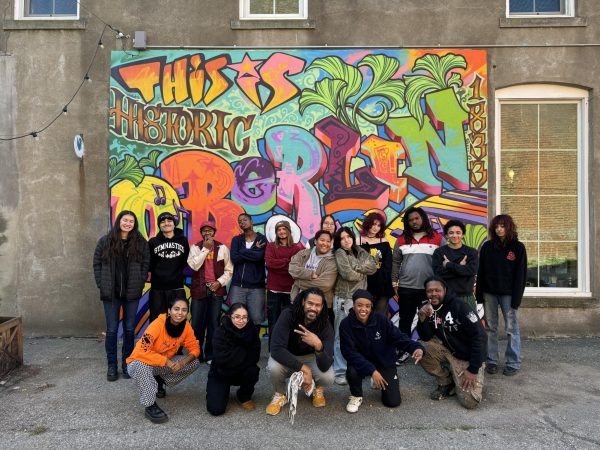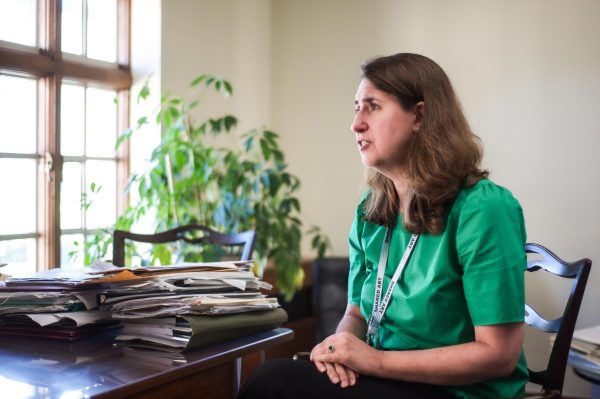CI@50 Celebrates 50 Years of Contact Improv at Oberlin
This year marks the 50th anniversary of contact improvisation at Oberlin.
Oberlin’s contact improvisation group, Critical Mass, will host a series of events this year, culminating in a five-day festival in July to celebrate the 50th anniversary of contact improvisation. Contact improv is a style of experimental dance that was developed at Oberlin in 1972 and later expanded into a globally renowned art form.
“Critical Mass: CI@50,” aims to honor the history and values of contact improvisation by encouraging students to explore the art form through events like an exhibit in the Allen Memorial Art Museum, a historical exhibit in the Mary Church Terrell Main Library, and a collection of essays about contact improv. Through these events, Critical Mass hopes to draw people from around the world to come and exchange experienc- es and ideas about contact improv.
Contact improv was first taught in Oberlin in 1972 by choreographer Steve Paxton. During Winter Term, Paxton created a piece called Magnesium, which showcased 12 Oberlin students as they experimented with the concepts of standing, falling, and contact through dance. This performance is widely cred- ited as the first instance of a contact improv performance, and it sparked a movement that spread across the globe.
Contact improv combines aspects of dance, gymnastics, and aikido and experiments with the concepts of gravity, physics, and intentional falling throughout each performance. Although there are some elements that remain the same across performances, it is an art form that, for most of its existence, has es- caped formal rules and definitions.
Rebecca Janovic, OC ’18, is the project coordinator for “Critical Mass: CI@50” and teaching assistant in Oberlin’s con- tact improvisation courses; she is passionate about introducing audiences to the abstract art form.
“[Contact improv is] kind of undefinable in some senses,” Janovic said. “It’s a space to research into your own experience of touch, and not just physical touch — although that is part of it … but the degree to which we want to touch and be touched.”
Ann Cooper Albright, chair of the Dance department and project director for “Critical Mass: CI@50,” describes contact improv as an experiment with weight and a shared point of contact between two people.
“[There is a] moment of mutual weight interdependence,” Albright said. “That point of contact is inherently unstable. … So in order to survive the improvisation of that point of contact moving through space and across the body, you have to train in a way that incorporates martial arts skills, dance skills, [and] improvisational skills, as well as some aspects of meditative skills.”
She also noted that, along with being an art form, contact improv can be applied to our daily lives as well.
“It’s a form that for me is exciting to do, but I also think that it has kind
of metaphysical implications about all kinds of ways of being in the world,” Albright said. “How do you sustain yourself when the world is falling apart? Well, you get used to disorientation and learn how to move with it. That’s an amazing skill.”
Although all forms of contact improv have some shared aspects of touch and partnering, there has never been any official requirements or definitions placed on the art form. Rather, the practitioners of the dance style around the world each have their own unique understanding of the style and how it is performed.
“It’s always geographically unique and also [unique to] who’s teaching it and whoever’s body it’s coming through,” Janovic said. “The flavor here [at Oberlin] is very fierce, and it’s very physical. It’s committed, and that’s upheld by being within an academic structure.”
Albright, who has been teaching con- tact improvisation at Oberlin for over 30 years, noted that Oberlin’s style of contact improv has also changed over time. “When I got here in the ’90s, students were way more willing to throw them- selves around,” she said. “They were much more interested in taking physical risks. I think students [today] are a little more fearful and a little more fragile in their bodies, so they have to be coaxed to come out of that a little bit.”
The year-long celebration of contact improv at Oberlin will draw practi- tioners from all over the world, spark- ing the transfer and sharing of ideas and practices. The festival will be comprised of a variety of different events through- out the year, some of which have already occurred or are ongoing.
Over Winter Term, as part of this celebration, Oberlin hosted Slovenian artist Jurij Konjar, who partnered with the Dance department to host a series of workshops teaching students the skills needed for contact improv and leading them to a final show in which the students re-enacted Paxton’s original contact improvisation concept, Magnesium.
College second-year Katy Masterman took part in the contact improvisation Winter Term project. Before the project, they didn’t know much about contact improvisation, but through Winter Term, they came to appreciate the form.
“Jurij was an excellent teacher, and everyone there was very supportive,” Masterman said.
They also noted that through their experience with contact improv, they have learned a lot about certain aspects of dance and this particular form.
“I think I have a better relationship with falling,” they said. “We did in class a lot of work in learning how to fall safely and different roles and techniques in how to do that. I feel like now I’m not so scared of it in a dance sense.”
Also part of the celebration is Collective Gestures, an exhibit in the AMAM’s
Ripin Gallery that explores the history of experimental dance in Oberlin, focusing particularly on contact improv. The exhibit features art from Yoko Ono, Theresa Antonellis, John Cage, Robert Motherwell, and other artists, as well as historical photographs and audio and visual representations of contact improv. This exhibit will be on display from Jan. 18—July 17.
Additionally, on May 6, the Mary Church Terrell Main Library will pre- miere an exhibit detailing the life and work of Nancy Stark Smith, OC ’73, one of the first practitioners of contact improv who was vital in the spread of contact improv across the world. This exhibit will run through July 31.
“Critical Mass: CI@50” will culminate in a five-day festival in July which will include a variety of different work- shops, performances, and writings, all with the aim to commemorate the roots of contact improv in Oberlin. Hoping to foster meaningful discussions on the in- tersections of activism and art, the festi- val will run July 7–11, and event registra- tion will open on March 22.
Although there are specific skills needed for some parts of contact improv, Janovic maintains that anyone who wants to get involved in this dance style shouldn’t be scared away. The Dance department is hosting in-person contact improv sessions, or jams, every Sunday in the Warner Main Studio, and they host pre-jam crash courses in con- tact improv techniques for beginners.
“A jam space is always open for new and old and anyone interested,” Janovic said. “It’s not a closed container. We continue to welcome new people. Anyone curious [can] come throughout the semester, we always have jams Sunday from 4–6 [p.m.]. … If you want to be dancing, you can.”




